Diesel Digest
The main fuel for your trucks and construction equipment is called diesel, and the cost to produce and deliver this distillate fuel to customers includes a myriad of factors — the costs of crude oil, refinery processing, marketing and distribution and retail station operation, among others. The retail pump price reflects these costs and the profits (and sometimes losses) of the refiners, marketers, distributors and retail station owners.
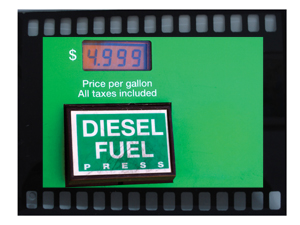
Historically, the average price of diesel fuel has been lower than the average price of gasoline. However, this is not always the case. In some winters, where the demand for distillate heating oil is high, the price of diesel fuel has risen above the gasoline price. Since September 2004, the price of diesel fuel has been generally higher than the price of regular gasoline all year round for several reasons. Worldwide demand for diesel and other distillate fuel oils has been increasing steadily, with strong demand in China, Europe and the United States, putting more pressure on the tight global refining capacity. In the United States, the transition to ultra-low-sulfur diesel (ULSD) fuel has affected production and distribution costs. Also, the federal excise tax on diesel fuel is 6 cents higher per gallon (24.4 cents per gallon) than the tax on gasoline.
Retail diesel fuel prices are likely to remain elevated as long as crude oil prices and world demand for distillate fuels remain high. According to EIA’s 2008 Short-Term Energy Outlook, national average retail diesel fuel prices peaked in the third quarter of 2008 at $4.75 per gallon before they possibly fall to $4.11 per gallon by the fourth quarter of 2009, primarily due to the forecast for the price of West Texas Intermediate crude oil to average between $121 and $133 per barrel during this same period. However, the recent volatility seen in crude oil and petroleum product prices, if continued, may significantly alter these price projections.
The phase-in of the U.S. Environmental Protection Agency’s (EPA) sulfur standards for diesel fuels has the potential to continue to influence diesel fuel prices. The logistics of delivery of ULSD to retail service stations can be a challenge. Most ULSD travels through pipelines on the way to bulk terminals for final transfer by tanker truck to retail stations. Other diesel fuels and petroleum products with a higher sulfur content in the pipeline, storage and local distribution systems might contaminate ULSD (jet fuel, for example, can have 3,000 ppm of sulfur). If contaminated, it may not be possible to correct a ULSD fuel batch by blending with additional low-sulfur product, and contaminated batches have to be returned to a refinery for reprocessing, a difficult and expensive problem. Even without potential delivery problems, it costs relatively more to produce ULSD fuel.
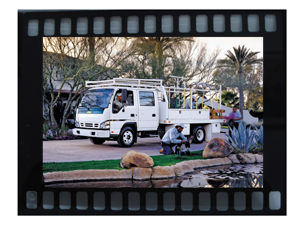
For more great information on diesel fuel, visit the Energy Information Administration, the official energy statistics association for the U.S. government at https://www.eia.doe.gov/bookshelf/brochures/diesel/index.html.
Cost-Effective Contracting
Toyota Announces Pricing for 2010 Tundra Trucks
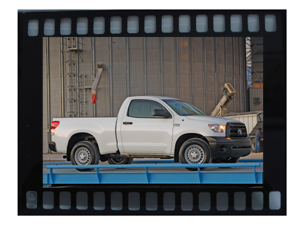
The company is quick to note that the value is enhanced on all 2010 Tundra models with the addition of standard and optional exterior, mechanical, safety and convenience features including an all-new 4.6-liter i-FORCE V8 engine. All 2010 Tundra models receive a redesigned front grille and tail lamps. Additional standard equipment on all Tundra models includes driver and front passenger knee airbags, height-adjustable headlamps and a redesigned seven-pin towing hitch connector that sits above the hitch to help avoid damage during high departure angle driving. Also, a shelf to help organize storage space has been added to the lower glove box.
New 2010 Tundra Work Truck Packages are aimed at commercial truck buyers or those who otherwise require a tough no-frills truck with plenty of cargo and towing capacity. Tundra models equipped with optional work truck packages will carry a price adjustment that ranges from $195 to $1,030 less than the truck’s standard MSRP, depending on the model.
Coalition Forces
Chrysler LLC and Fiat Group Announce Global Strategic Alliance
Detroit’s troubled truck industry continued to restructure throughout May. Last month Chrysler LLC announced that the U.S. Bankruptcy Court had entered an order approving a process for the sale of substantially all of the company’s assets — a few weeks after announcing a comprehensive restructuring plan to establish a global strategic alliance with Fiat SpA (the Italian automotive manufacturer) to form a new company.
Chrysler argued in its motions that it is imperative that the process be completed expeditiously in order to secure the maximum value for Chrysler’s stakeholders through the Chapter 11 process. Given the stress on all aspects of the automotive industry and the current idling of Chrysler’s manufacturing facilities, Chrysler said that key relationships with suppliers, dealers and other business partners cannot be preserved if the sale process is not concluded quickly.
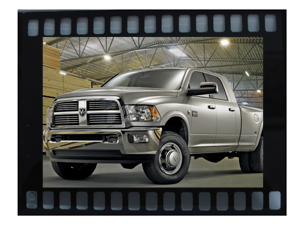
While Chrysler has already conducted discussions with Nissan, GM, Volkswagen, Tata motors, Magna, GAZ, Hyundai, Honda and Toyota and others over an extended period of time, these discussions have not produced any viable alternative to the proposed alliance with Fiat. Chrysler initiated discussions with Fiat more than a year ago to develop plans for a global product alliance. Over the past several months, these discussions have evolved and expanded. Chrysler and many of its stakeholders worked to agree upon concessions that will result in a significantly lower cost base and enable fulfillment of a broader strategic alliance. It will allow Chrysler and Fiat to fully optimize their respective manufacturing footprints and the global supplier base, while providing each with access to additional markets. Fiat powertrains and components will also be produced at Chrysler manufacturing sites.
“We want to personally assure everyone that the new company will produce and support quality vehicles under the Jeep, Dodge and Chrysler brands, as well as parts under the Mopar brand. Chrysler employees will become employees of the new company. Chrysler dealerships remain open for business serving our customers. All vehicle warranties will be honored without interruption and consumers can continue to purchase our vehicles with complete confidence,” explained Nardelli.
Despite substantial progress on many fronts, Chrysler was not able to obtain the necessary concessions from all of its lenders, which would have avoided the need for a bankruptcy proceeding. As a result, under the direction of the U.S. Treasury, Chrysler LLC and 24 of its wholly owned U.S. subsidiaries filed voluntary petitions under Chapter 11 of the U.S. Bankruptcy Code in U.S. Bankruptcy Court for the Southern District of New York.
“Even though total agreement was not possible, I am truly grateful for all that has been sacrificed, on the part of many of Chrysler’s stakeholders to reach an agreement in principle with Fiat,” said Nardelli. “My No. 1 priority has been to preserve Chrysler and the thousands of people who depend on its success. While I am excited about the creation of the global alliance, I am personally disappointed that today Chrysler has filed for Chapter 11. This was not my first choice.”
Clean Machines
Navistar First Truck and Bus Maker to Receive Hybrid Certification from California Air Resources Board
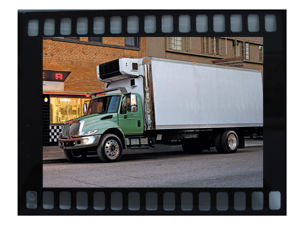
On April 24, the CARB voted to implement a $25 million voucher incentive program as part of California Assembly Bill (AB) 118 to accelerate the deployment of about 1,000 medium- and heavy-duty diesel hybrid trucks and buses in California. Purchasers of commercial hybrid vehicles under this program will receive incentives ranging from $10,000 to $35,000 per vehicle depending on weight class. In addition, purchasers of CARB-certified International DuraStar Hybrid models and IC Bus hybrid buses will receive vouchers worth another $5,000 per vehicle under the incentive.
“This is a win-win for everyone in California,” said Jack Allen, Navistar president, North American truck group. “By working together we created the opportunity to put more clean diesel hybrid trucks and buses on California’s roads, and we’re proud that Navistar’s hybrid leadership directly puts money back in our customers’ pockets.”
AB 118, authored and championed by former California State Assembly Speaker Fabian Nunez, aims to reduce greenhouse gases from California’s transportation sector and was signed by Gov. Arnold Schwarzenegger on Oct. 14, 2007. For decades, Navistar has demonstrated a commitment to clean technologies that benefit the environment and its customers. In 1989, Navistar was the first original equipment manufacturer to release the smokeless diesel engine and, in 2001, Navistar was the first engine manufacturer to gain certification from the U.S. Environmental Protection Agency (EPA) for meeting particulate and hydrocarbon emissions standards — six years ahead of schedule. Navistar was also the first to enter line production of commercial diesel hybrid trucks and school buses.


Comments are closed here.